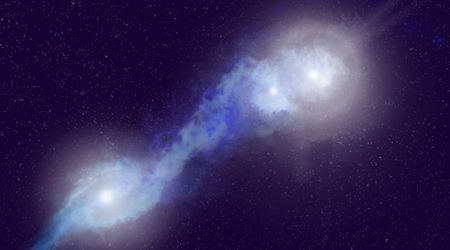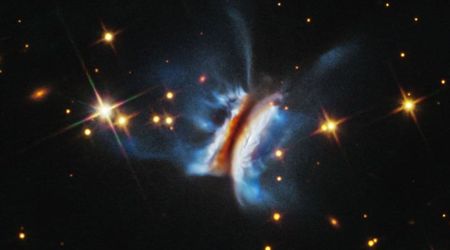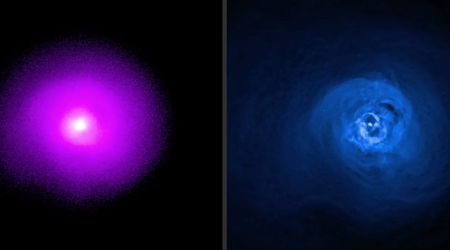M81 and M82 Galaxies

M81 is an outstanding Sb spiral galaxy in Ursa Major. Although its magnitude of 7 makes it bright enough to be visible in 7×50 binoculars in suburban skies, M81 it is pretty hard to find because it is located far from any handy reference stars.
To find M81 start with a line drawn from Phecda to Dubhe, two bright stars in Ursa Major. Extend that line past Dubhe for the same distance you just traversed, this route passes to within a degree of M81. Watch for 24 Ursae Majoris lying at the right angle of a small triangle. The triangle points southeast and almost directly to M81, just two degrees away.
M81 is an example of a starburst galaxy undergoing a period of rapid star formation. Even in a small telescope it looks disturbed, and in larger instruments it is highly mottled with several bright knots visible.
Found within the same low-power eyepiece field as M81 is M82, a peculiar edge-on galaxy. Although it is a magnitude fainter than its neighbor, M82 offers more structural detail. The most prominent feature is a rift of darkness across its center. Several other dark filaments can be spotted throughout M82, but you need a large telescope for that.









